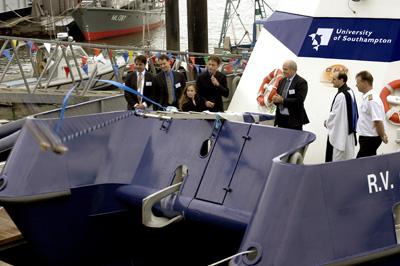Callista

Picking a name is a very difficult task, as you need to have something you can ultimately live with. Naming a boat is also very difficult. When we were searching for a name of the University of Southampton's new Research Vessel, we wanted a name that reflected the type of work the vessel would be doing.
The R.V. Callista was named in 2005 by Chris Packham at the University of Southampton’s Waterfront campus. The name Callista was chosen as it has multiple connotations.
The word Callista comes from the Greek meaning most beautiful and we all like to think our Callista is very beautiful indeed.
Callista is a genus of bivalve mollusc (clam), first described by Poli in 1791. Giuseppe Saverio Poli was an Italian Physicist, Biologist and Natural Historian. You could say he was an Oceanographer at heart as he specialised in some of the disciplines that make up the wonderful field of Oceanography. He was particularly interested in Molluscs (Clams), Cnidarians (Jellyfish) and Lepidoptera (Butterflies).
The shells of Callista bivalves are sometimes referred to as smooth clams; they are large solid shells and can grow as big as 9cm in length. The shell itself is highly polished with many concentric rings. The shells are often reddish-brown with a pink tinge and they are bright white on the inside. They are shallow burrowers in clean sand where they filter feed. They are a European wide species but of late they are only being found in the south west of England and Cardigan Bay.
Callista clams are also historically significant as their shells are easily identifiable in sediment samples and can be used to date sediment cores.
